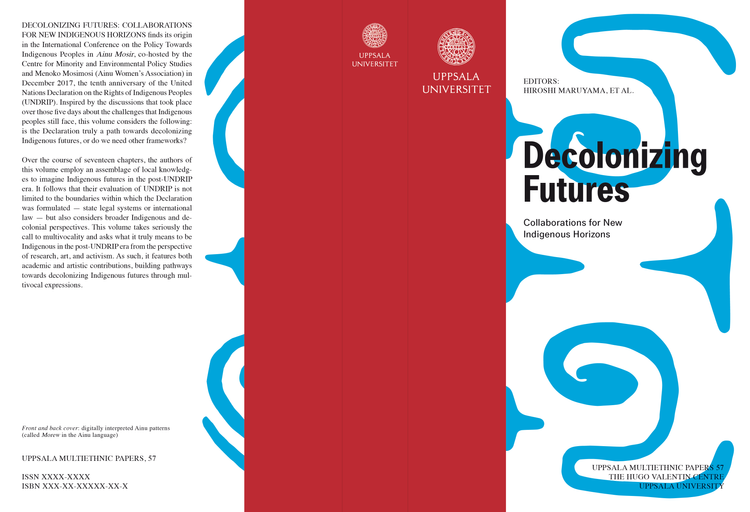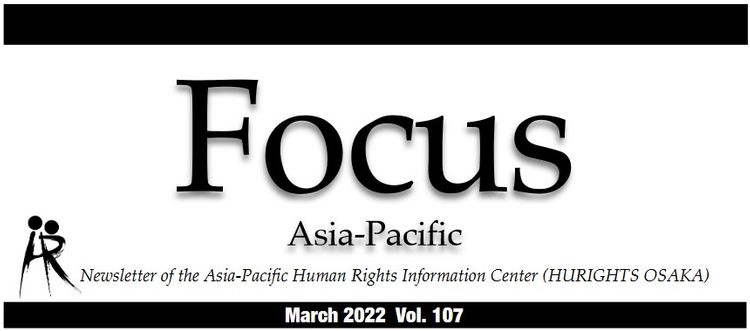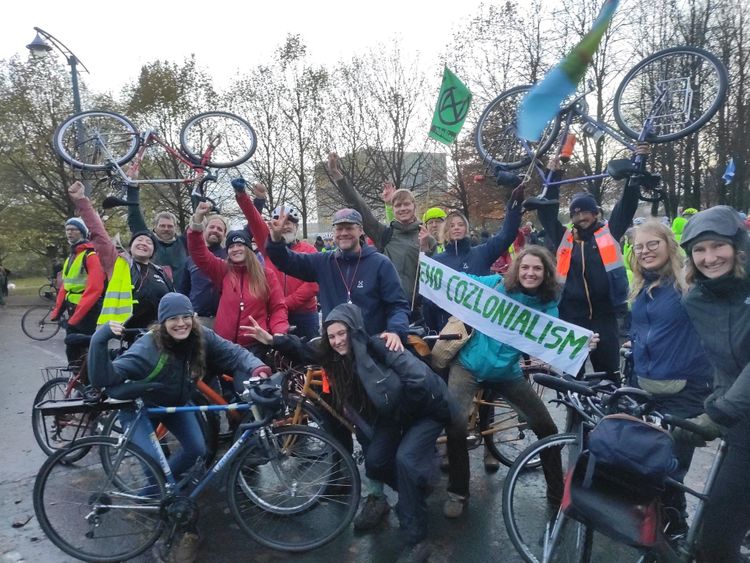A Critique of the Draft of Guidelines for Ethical Research: Towards the Decolonization of Indigenous Studies

CEMiPoS director Hiroshi Maruyama critiques guidelines for the ethical research of indigenous peoples co-written by the Anthropological Society of Japan, the Japanese Archaeological Association, and the Japan Society of Cultural Anthropology. He explains that the new guidelines, written without the appropriate consultation of Ainu, do not sufficiently outline a process for repatriating Ainu ancestral remains, and therefore do not respect the rights guaranteed to indigenous peoples by UN Covenants.
Centre for Environmental and Minority Policy Studies
Hiroshi Maruyama
Trans. Mashiyat Zaman
Introduction
In recent years, museums and universities around the world have repatriated the unjustly excavated ancestral remains of indigenous peoples to their rightful communities[i]. Nonetheless, last December in Japan, remains of the Indigenous Ainu people, which had been under the unethical management of twelve Japanese universities, were “aggregated” against the will of many Ainu people at the newly built Symbolic Space for Ethnic Harmony in Shiraoi, Hokkaido [ii]. The Ainu Association of Hokkaido has since solicited public comments on a draft of “Guidelines for Ethical Research of the Ainu People,” co-written with the Anthropological Society of Japan, the Japanese Archaeological Association, and The Japan Society of Cultural Anthropology.
This article examines the draft of ethical research guidelines, especially with regard to the research of Ainu remains, in three respects: scholarly injustice, the guidelines on the repatriation of ancestral remains, and the decision-making process. It demands that the aforementioned academic societies commit to the decolonization of their indigenous studies, based on the United Nations Declaration on the Rights of Indigenous Peoples (UNDRIP) adopted by the General Assembly in 2007.
1. Scholarly Injustice
Through such injustices as fraudulent medical examinations of Ainu people and the robbery of their remains and burial accessories, the invasive study of Ainu by Wajin researchers continued unabated for nearly a century, beginning with the former Tokyo Imperial University’s Koganei Yoshikiyo in the late 19th century, and carried on by Kodama Sakuzaemon and Yamazaki Haruo of the former Hokkaido Imperial University [iii]. As this research was justified by and propagated fallacious colonialist ideologies such as social Darwinism and eugenics, not only was the process unjust, but the goal as well.
Not only was a large sum invested into this research by the Japanese government [iv], but laws in Hokkaido concerning the exhumation of human remains were loosened for the researchers’ convenience [v]. Hospitals, police, and even station masters across Hokkaido were made part of a local network collecting body measurement data and Ainu remains [vi]. Thus, all of Japanese society was complicit in this act of scholarly injustice against the Ainu.
Over the course of two years, beginning in 1980, Kaibazawa Hiroshi repeatedly brought Hokkaido University’s scholarly integrity into question, only for the University to ignore his criticism [vii]. In 2008, when Ogawa Ryukichi went as far as filing for a review under the Administrative Appeal Act, the University did not release any documents related to its management and study of Ainu remains and burial accessories [viii].
Although Hokkaido University released its first investigative report in 2013, the scope of the investigation itself was limited to internal documents, and failed to recognize past injustices [ix].
And today, far from taking actions towards repatriation, Hokkaido University, with eleven other institutions that had also participated in the cruel research of Ainu remains, has ignored many Ainu’s objections and “aggregated” its hoard at Shiraoi [x], committing yet another scholarly injustice against the Ainu people. The draft of Guidelines for the Ethical Research of Ainu People, rather than criticizing this history of scholarly injustice, and offering neither apology nor reflection, demands only that a system of studying the Ainu remains be established as quickly as possible.
2. Guidelines for the Repatriation of Ainu Remains
As a result of Ogawa Ryukichi and Jounoguchi Yuri’s efforts to bring the matter of the repatriation of Ainu remains to court [xi], in June 2014 the Japanese government officially published its “Guidelines Concerning the Repatriation of Identified Ainu Remains.” Then, in December 2018, in order to include unidentified remains, the government published the updated “Guidelines Concerning the Repatriation of Ainu Remains Collected by Universities to their Excavation Site” [xii]. However, in the latter case, not only must the government authorize the organizations representing the regions to which the remains will return, but the application period is limited. In other words, authority over the Ainu remains has merely shifted from the universities to the government, violating Article 12 of the United Nations Declaration on the Rights of Indigenous Peoples, which ensures the repatriation of human remains for indigenous peoples. Furthermore, the aggregation of Ainu remains at Shiraoi under the Japanese government curtails the burden of responsibility of the aforementioned twelve universities and facilitates greater access to them, raising concerns that research into Ainu remains may continue to grow.
While the Guidelines Concerning the Repatriation of Ainu Remains suggests that it is still possible for the Ainu to claim the return of ancestral remains from Shiraoi, the draft of Guidelines for Ethical Research, prepared under the supervision of the Ainu Association of Hokkaido, does not explicitly state that Ainu remains buried before the Meiji era cannot be used as objects of research, giving rise to inconsistencies as to how they should be handled.
Thus, the draft of Guidelines for the Ethical Research of Ainu People is intrinsically flawed – instead of considering the repatriation of Ainu remains, it actually promotes their continued research.
3. The Decision-Making Process
As of 2016, the Ainu Association of Hokkaido had 2,300 members, however this number does not exceed even one-tenth of Hokkaido’s Ainu population [xiii]. In other words, the draft of Guidelines for the Ethical Research of Ainu People does not reflect the opinion of at least 90% of the Ainu population in Hokkaido. As an organization, the Ainu Association of Hokkaido is not representative of the Ainu people, and thus fails to uphold Article 19 of the UNDRIP, Article 27 of the International Covenant on Civil and Political Rights and Article 15, paragraph 1 (a) of the International Covenant on Economic, Social and Cultural Rights.
According to Article 19 of the UNDRIP, “States shall consult and cooperate in good faith with the indigenous peoples concerned through their own representative institutions in order to obtain their free, prior and informed consent before adopting and implementing legislative or administrative measures that may affect them.” The aforementioned International Covenants add that states are responsible for ensuring the effective participation of indigenous people in deciding legal and protective measures which may affect their cultural practices [xiv], and also guarantee their free, prior and informed consent in all decisions concerning their rights [xv]. Furthermore, the International Convention on the Elimination of All Forms of Racial Discrimination advocates legislation that ensures diverse groups within indigenous populations are not disregarded by the law [xvi].
In Closing
The Anthropological Society of Japan, the Japanese Archaeological Association, and The Japan Society of Cultural Anthropology must publicly recognize Japan’s history of scholarly injustice against the Ainu people and the invasive research of their ancestral remains. Furthermore, they must resolve the contradictions regarding the repatriation of Ainu remains between the Guidelines for the Repatriation of Ainu Remains and the draft of the Guidelines for the Ethical Research of the Ainu People. Finally, following the direction of the UNDRIP, Ainu organizations other than the Ainu Association of Hokkaido should also be represented in dialogue concerning the repatriation and reburial of Ainu remains. In other words, Ainu research practices must be fundamentally changed.
In order to decolonize their indigenous studies, the academic societies mentioned above, as well as the twelve universities and the Japanese government, are obliged to respect and reinforce the Ainu people’s right to self-determination and the repatriation of their ancestors’ remains. Thus, it is only appropriate that these establishments not only return the collected Ainu remains, but also facilitate their reburial at the kotan where they once rested.
[i] Maruyama, Hiroshi. Forthcoming. “Restitution and Resistance: The Enduring Legacy of the Colonial Robbery of Ainu Graves”. In The Editorial Board of Critical Studies of Indigenous Policy (ed.) Post-UNDRIP Policy towards Indigenous Peoples (working title), Uppsala: The Hugo Valentin Centre, Uppsala University.
[ii] 北海道アイヌ協会. 2019. 「『アイヌ民族に関する研究倫理指針(案)』に関する御意見・情報の募集について」 (https://www.ainu-assn.or.jp/news/files/6393b7df3a4874e847a1e2980841c264c23fc9eb.pdf)
[iii] Maruyama, Hiroshi. Forthcoming. “Restitution and Resistance: The Enduring Legacy of the Colonial Robbery of Ainu Graves”. In The Editorial Board of Critical Studies of Indigenous Policy (ed.) Post-UNDRIP Policy towards Indigenous Peoples (working title), Uppsala: The Hugo Valentin Centre, Uppsala University.
[iv] 国立大学法人北海道大学. 2013. 『北海道大学医学部アイヌ人骨収蔵経緯に関する調査報告書』pp. 18-21
[v] 同上, pp. 35-6.
[vi] Low, Morris. 2012. “Physical Anthropology in Japan”. Current Anthropology 53 (3): p. s64.
[vii] 市川利美, 平田剛士. 2016. 「過ちに真摯に向き合えない北海道大学」, 北大開示文書研究会編著『アイヌの遺骨はコタンの土へ』, 緑風出版, pp. 168-9.
[viii] 殿平善彦. 2016. 「大量のアイヌ遺骨がなぜ全国の大学にあるのか」, 北大開示文書研究会編著『アイヌの遺骨はコタンの土へ』, 緑風出版, pp. 8-9.
[ix] 国立大学法人北海道大学. 2013. 同上書, 総括, pp. 113-17.
[x] 北大開示文書研究会. 資料室(http://www.kaijiken.sakura.ne.jp/archives.html)
[xi] Maruyama, Hiroshi. Forthcoming. “Restitution and Resistance: The Enduring Legacy of the Colonial Robbery of Ainu Graves”. In The Editorial Board of Critical Studies of Indigenous Policy (ed.) Post-UNDRIP Policy towards Indigenous Peoples (working title), Uppsala: The Hugo Valentin Centre, Uppsala University.
[xii] 文部科学省. 2018. 「大学の保管するアイヌ遺骨等の出土地域への返還手続きについて」(https://www.kantei.go.jp/jp/singi/ainusuishin/pdf/181226_chiiki-guidelines.pdf)
[xiii] Morris-Suzuki, Tessa. 2018. “Performing Ethnic Harmony: The Japanese Government’s Plans for a New Ainu Law.” Japan Focus 16 (2): pp. 5-6.
[xiv] Committee on Civil and Political Rights. 1994. General Comment No.23, Paragraph 7. (https://www.refworld.org/docid/453883fc0.html).
[xv] Committee on Economic, Social and Cultural Rights. 2009. General Comment No. 21, Paragraph 37. (https://www.refworld.org/docid/4ed35bae2.html).
[xvi] Committee on the Elimination of Racial Discrimination. 2018. Concluding observations on the combined twenty-second and twenty-third periodic reports of Sweden: Paragraph 17(c) (https://tbinternet.ohchr.org/_layouts/15/treatybodyexternal/Download.aspx?symbolno=CERD/C/SWE/CO/22-23&Lang=En)この文書にはサーミのことが書かれているが、それはアイヌにも当てはまる。




